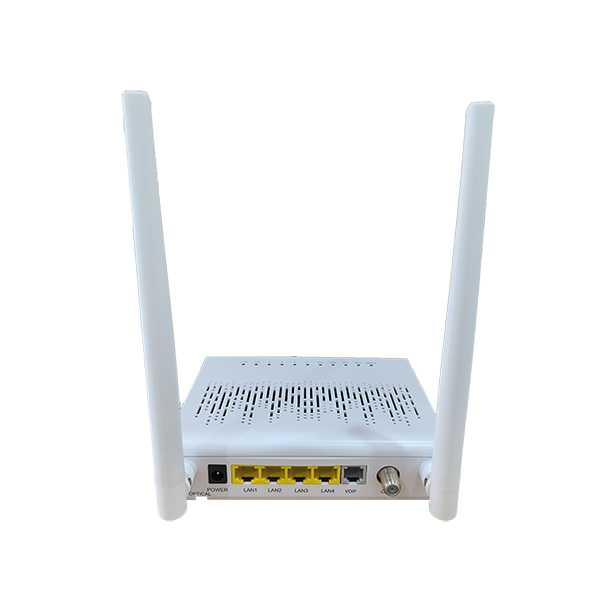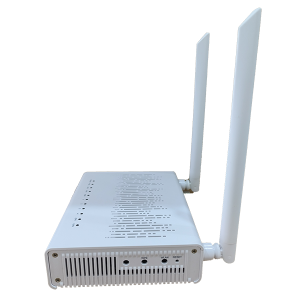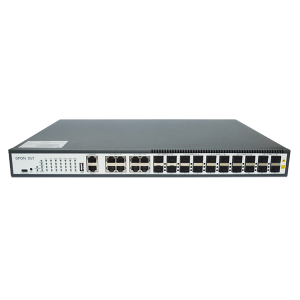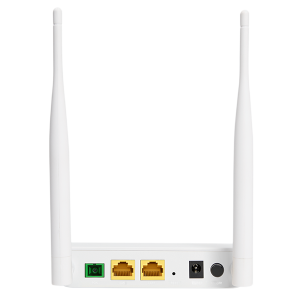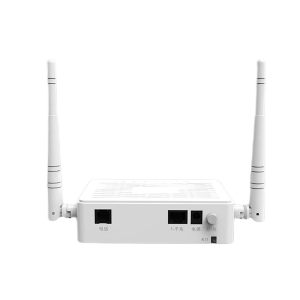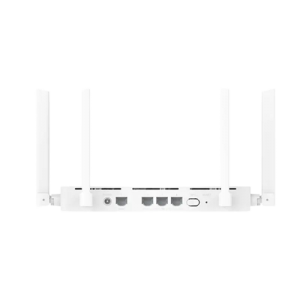Products
Explore LIMEE the latest innovation in XGSPON technology: 8-port OLT with Layer 3 capabilities
Explore LIMEE the latest innovation in XGSPON technology: 8-port OLT with Layer 3 capabilities,
,
Product Characteristics
LM241TW4, dual-mode ONU/ONT, is one of the XPON optical network units, support GPON and EPON two modes of self-adaptation. Applied to FTTH/FTTO, The LM241TW4 can integrate wireless functions conforming to 802.11 a/b/g/n technical standards. It also supports 2.4GHz wireless signal. It can provide users with more efficient data transmission security protection. And provide cost-effective TV service through 1 CATV port.
The 4-port XPON ONT allows users to access the high-speed Internet connection XPON port, which is shared with the Gigabit Ethernet port. Upstream 1.25Gbps, downstream 2.5/1.25Gbps, transmission distance up to 20Km. With speeds of up to 300Mbps, LM240TUW5 uses an external omnidirectional antenna to maximize the wireless range and sensitivity, so that you can receive wireless signals anywhere in your home or office and you can also connect to the TV, which can enrich your life.
FAQ
Q1: What is the difference between EPON GPON OLT and XGSPON OLT?
The biggest difference is that XGSPON OLT support GPON/XGPON/XGSPON, Faster Speed.
Q2: How many ONTs can your EPON or GPON OLT connect to
A: It depends on ports quantity and optical splitter ratio. For EPON OLT, 1 PON port can connect to 64 pcs ONTs maximum. For GPON OLT, 1 PON port can connect to 128 pcs ONTs maximum.
Q3: What is the max transmission distance of the PON products to the consumer?
A: All the pon port’s max transmission distance is 20KM.
Q4: Could you tell What’s the difference of ONT &ONU?
A: There are no difference in essence, both are users’ devices. You could also say that ONT is part of the ONU.
Q5: What is FTTH/FTTO?
What is FTTH/FTTO?
XGSPON (10 Gigabit Symmetric Passive Optical Network) technology has revolutionized fiber optic communications, delivering faster data transfer speeds, increased bandwidth and enhanced network performance. To achieve seamless connectivity and meet the growing demands of modern applications, service providers are constantly striving to deploy more efficient and versatile optical line terminals (OLTs). In this blog, we will explore the latest innovations in XGSPON technology.
GPON (Gigabit Passive Optical Network) laid the foundation for high-speed fiber optic communications, followed by XGPON (10 Gigabit PON) which provided higher bandwidth. However, XGSPON goes one step further, enabling symmetrical data rates of 10 Gbps in both upstream and downstream transmissions, resulting in faster, more reliable connections.
Traditionally, OLTs have been configured with fewer ports. However, to accommodate the increasing number of users and devices in today’s connected world, OLTs with 8 ports are becoming increasingly popular. This expanded port density enables service providers to cater to a larger customer base, making fiber connectivity available to more individuals and businesses.
Layer 3 functionality:
Integrating Layer 3 functionality into the OLT unlocks extensive routing capabilities, thereby enhancing network performance and management. Layer 3 switches are responsible for guiding data packets across different networks, promoting efficient data flow and reducing network congestion. By integrating Layer 3 functionality into the OLT, service providers can optimize network performance, ensure efficient data routing, and enhance the overall user experience.
The latest OLT combines XGSPON technology with 8 ports and Layer 3 functionality, offering multiple benefits. Service providers can enjoy increased user capacity, improved network efficiency and simplified management. End users, on the other hand, can experience blazing-fast internet speeds, reliable connections, and enhanced performance for data-intensive applications such as video streaming, online gaming, and cloud services.
As technology continues to advance, the need for high-speed, reliable connections continues to grow. XGSPON technology, with its enhanced data transmission capabilities, coupled with the latest OLTs with 8-port and Layer 3 capabilities, provides a compelling solution to meet these requirements. By adopting these innovations, service providers can effectively meet the growing demands of modern connectivity, providing customers with superior network performance and an unparalleled user experience.
| Hardware Specification | ||
| NNI | GPON/EPON | |
| UNI | 1x GE(LAN) + 3x FE(LAN) + 1x POTs(optional) + 1x CATV + WiFi4 | |
| PON Interface | Standard | GPON: ITU-T G.984 EPON: IEE802.3ah |
| Optical Fiber Connector | SC/APC | |
| Working Wavelength(nm) | TX1310, RX1490 | |
| Transmit Power (dBm) | 0 ~ +4 | |
| Receiving sensitivity(dBm) | ≤ -27(EPON), ≤ -28(GPON) | |
| Internet Interface | 1 x 10/100/1000M auto-negotiation1 x 10/100M auto-negotiationFull/half duplex modeAuto MDI/MDI-XRJ45 connector | |
| POTS Interface (option) | 1 x RJ11ITU-T G.729/G.722/G.711a/G.711 | |
| WiFi Interface | Standard: IEEE802.11b/g/nFrequency: 2.4~2.4835GHz(11b/g/n)External Antennas: 2T2RAntenna Gain: 5dBiSignal Rate: 2.4GHz Up to 300MbpsWireless: WEP/WPA-PSK/WPA2-PSK、WPA/WPA2Modulation: QPSK/BPSK/16QAM/64QAMReceiver Sensitivity:11g: -77dBm@54Mbps
11n: HT20: -74dBm HT40: -72dBm |
|
| Power Interface | DC2.1 | |
| Power Supply | 12VDC/1A power adapter | |
| Dimension and Weight | Item Dimension:167mm(L) x 118mm(W) x 30mm (H)Item Net Weight:about 230g | |
| Environmental Specifications | Operating Temperature: 0oC~40oC (32oF~104oF)Storage temperature: -40oC~70oC (-40oF~158oF)Operating Humidity: 5% to 95%(Non-condensing) | |
| Software Specification | ||
| Management | Access Control, Local Management, Remote Management | |
| PON Function | Auto-discovery/Link detection/Remote upgrade software ØAuto/MAC/SN/LOID+Password authenticationDynamic Bandwidth Allocation | |
| Layer 3 Function | IPv4/IPv6 Dual Stack ØNAT ØDHCP client/server ØPPPOE client/Passthrough ØStatic and dynamic routing | |
| Layer 2 Function | MAC address learning ØMAC address learning account limit ØBroadcast storm suppression ØVLAN transparent/tag/translate/trunkport-binding | |
| Multicast | IGMPv2 ØIGMP VLAN ØIGMP transparent/Snooping/Proxy | |
| VoIP |
Support SIP Protocol |
|
| Wireless | 2.4G: 4 SSID Ø Ø2 x 2 MIMO ØSSID broadcast/hide Choose | |
| Security | DOS, SPI FirewallIP Address FilterMAC Address FilterDomain Filter IP and MAC Address Binding | |
| CATV Specification | ||
| Optical connector | SC/APC | |
| RF, optical power | -12~0dBm | |
| Optical receiving wavelength | 1550nm | |
| RF frequency range | 47~1000MHz | |
| RF output level | ≥ 75+/-1.5 dBuV | |
| AGC range | 0~-15dBm | |
| MER | ≥ 34dB(-9dBm optical input) | |
| Output reflection loss | >14dB | |
| Package Contents | ||
| Package Contents | 1 x XPON ONT, 1 x Quick Installation Guide, 1 x Power Adapter | |
Products categories
-

Phone
-

Email
-

Whatsapp
-

Skype
-

Top


